- Introduction to Cognitive Biases
- What Are Cognitive Biases?
- Common Cognitive Biases That Influence Our Decisions
- Overcoming Cognitive Biases
- Conclusion to Cognitive Biases
- Frequently Asked Questions (FAQs) about Cognitive Biases
- 1. What is a cognitive bias?
- 2. How do cognitive biases affect our everyday decisions?
- 3. Can you provide an example of confirmation bias in everyday life?
- 4. Why is the anchoring effect significant in negotiations?
- 5. What is the availability heuristic and how does it impact perception?
- 6. How can we overcome the status quo bias?
- 7. What steps can individuals take to minimize the effects of cognitive biases?
- 8. Are cognitive biases always negative?
- 9. What is the impact of cognitive biases in professional settings?
- 10. How do cognitive biases differ from logical fallacies?
- Additional Resources
Introduction to Cognitive Biases
In the intricate theater of our minds, where decisions take the stage every day, there lurk unseen influencers known as cognitive biases. These biases subtly shape our thinking and decision-making processes, often without a whisper of their presence. From the seemingly innocuous choices at the supermarket to the critical decisions in boardrooms, cognitive biases play a defining role, frequently steering us in directions we might not consciously choose. This article delves into these hidden forces, highlighting how they impact our perceptions and decisions, and provides strategies for mitigating their influence.
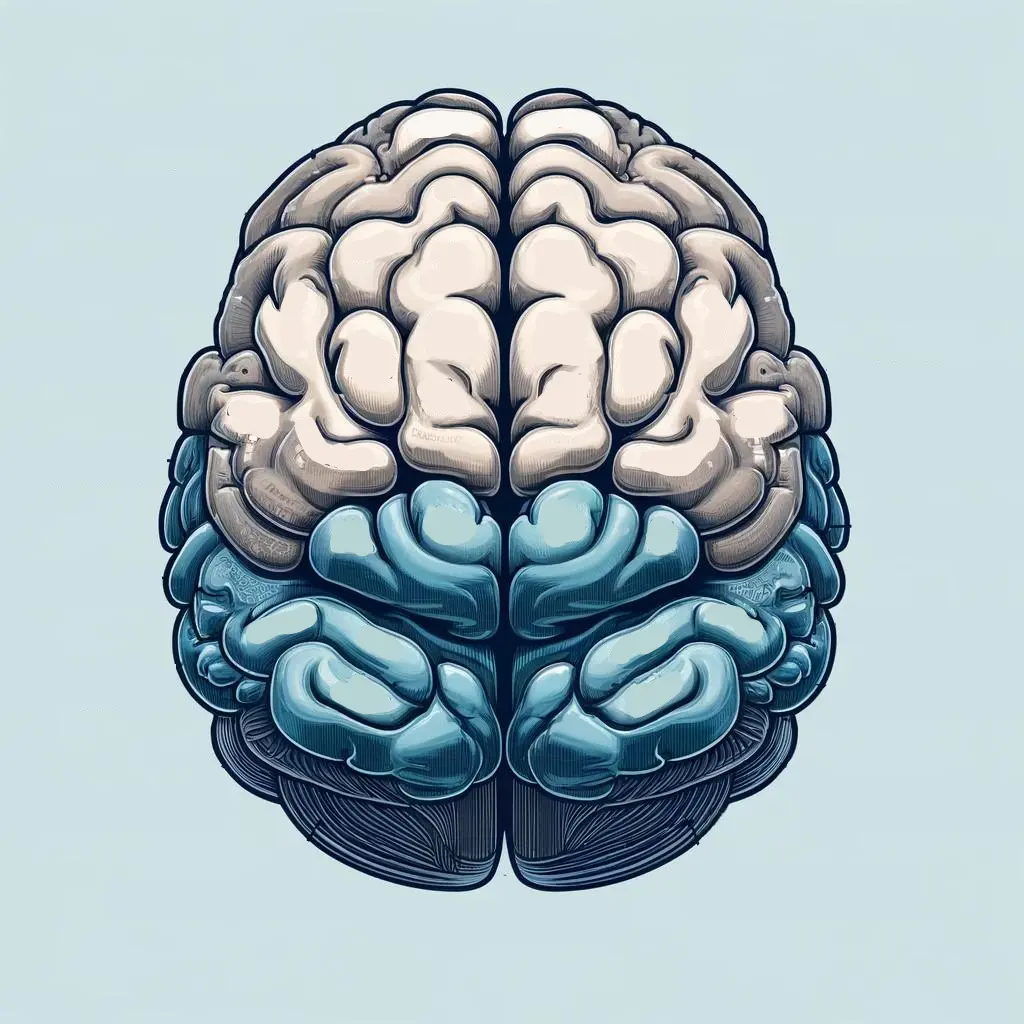
What Are Cognitive Biases?
Cognitive biases are systematic patterns of deviation from norm or rationality in judgment, whereby inferences about other people and situations may be drawn in an illogical fashion. Individuals create their own “subjective reality” from their perception of the input. An individual’s construction of social reality, not the objective input, may dictate their behavior in the social world. Thus, cognitive biases may sometimes lead to perceptual distortion, inaccurate judgment, illogical interpretation, or what is broadly called irrationality.
Although these biases are a ubiquitous part of human cognition, they often go unnoticed because they operate under the radar of conscious awareness. Yet, understanding these biases is crucial for enhancing decision-making skills, reducing errors in reasoning, and improving our overall understanding of reality.
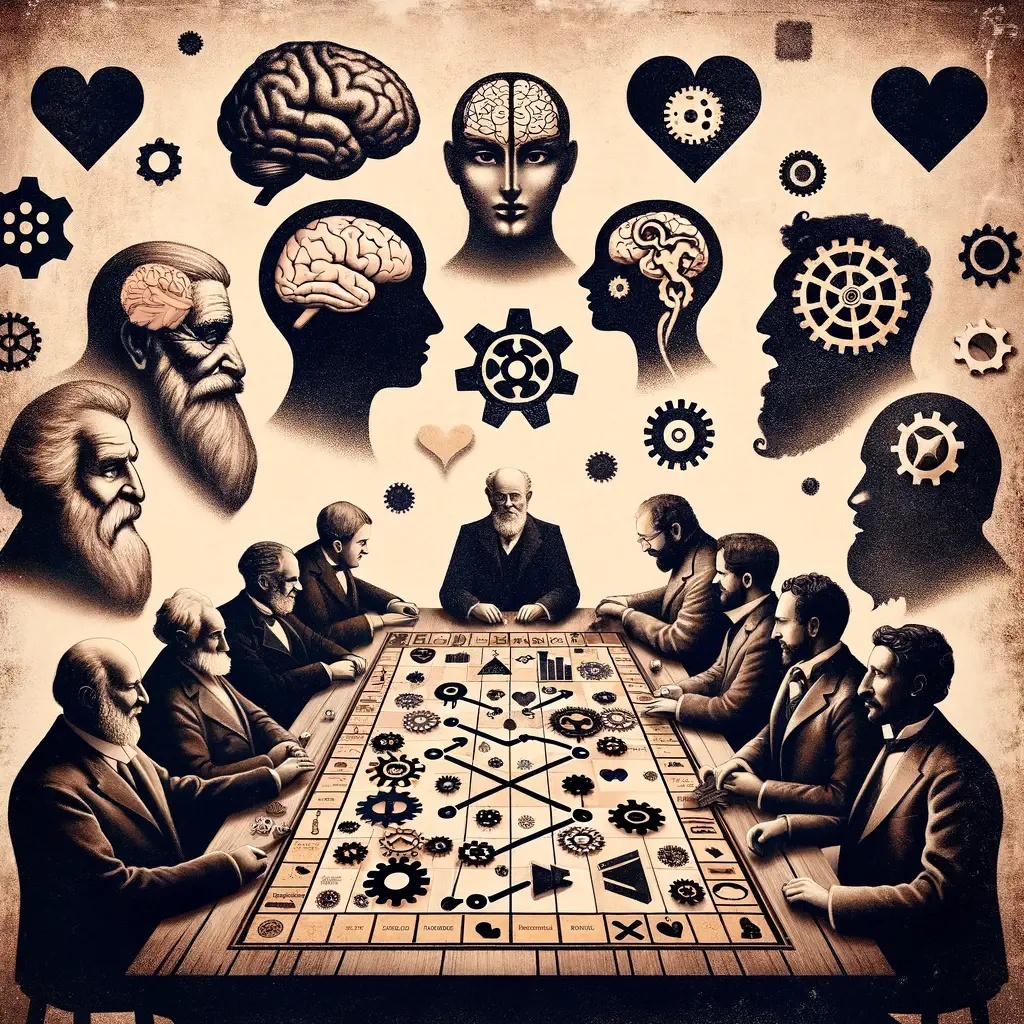
Common Cognitive Biases That Influence Our Decisions
Confirmation Bias: The Yes-Man in Our Minds
Confirmation bias is the mental shortcut that causes us to seek and favor information that confirms our pre-existing beliefs and hypotheses, while undervaluing or outright dismissing information that contradicts them. This bias ensures that the first information we receive and accept continues to influence our decisions and perceptions, often barricading our minds against diverse perspectives.
Real-World Implication:
In the business world, confirmation bias can lead to overconfidence in corporate strategies and investments, ignoring warning signs that might otherwise suggest a different course of action. For investors, this often translates into holding onto losing stocks based on initial analyses, even in the face of contrary evidence.
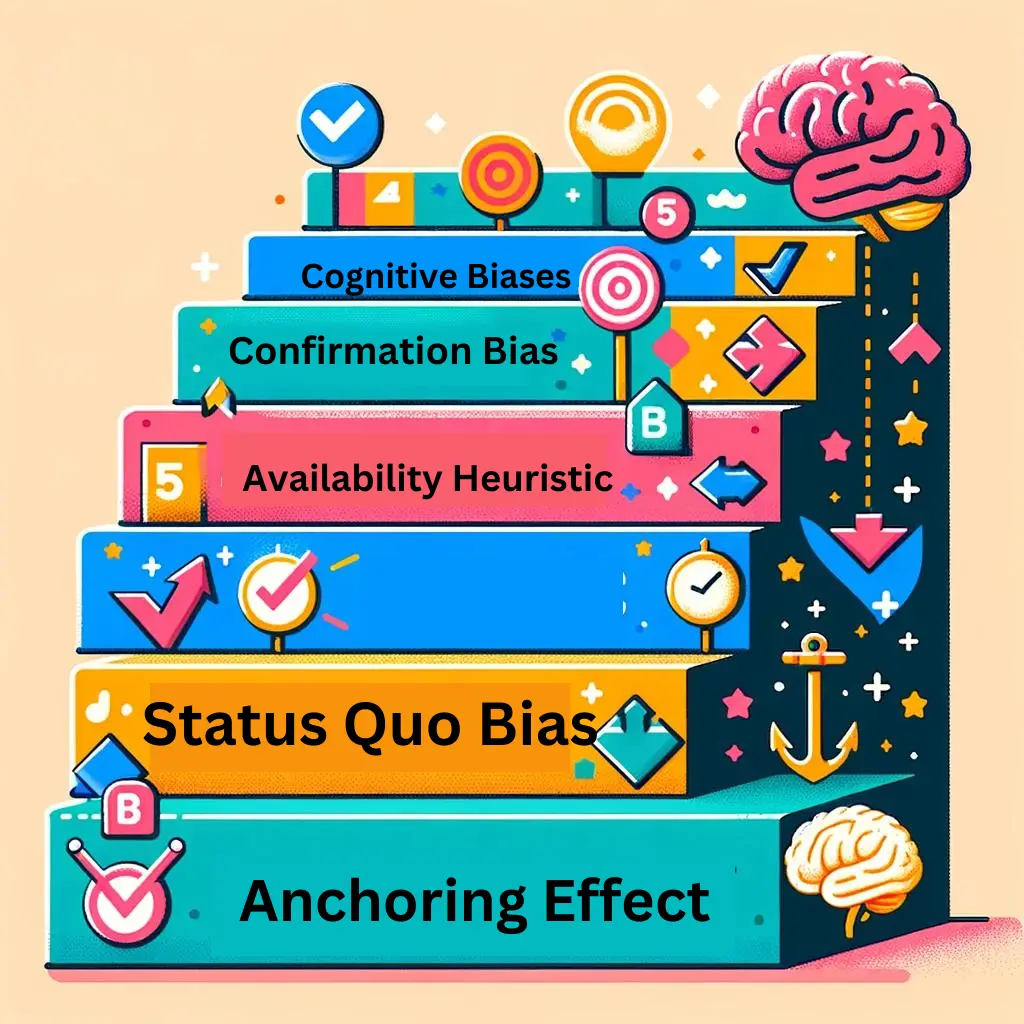
Anchoring Effect: The First Impression Anchor
The anchoring effect describes our tendency to rely too heavily on the first piece of information we encounter (the “anchor”) when making decisions. Subsequent judgments are then made by adjusting away from that anchor, and there is a bias toward interpreting other information around the anchor.
Real-World Implication:
When negotiating salaries, the first number put on the table sets the tone for the range of negotiations, often limiting the employer or the employee from straying too far from that initial figure. Similarly, initial pricing can affect how customers perceive subsequent discounts or changes in price.
Availability Heuristic: The Front-of-Mind Fallacy
This bias refers to our propensity to overestimate the importance and frequency of information that is readily available to us, either through recent exposure or emotional impact. This can skew our understanding of how common or probable events actually are.
Real-World Implication:
The media’s focus on sensational events, like airplane crashes or shark attacks, can lead to an overblown fear of these rare occurrences. Meanwhile, everyday risks such as car accidents or chronic health conditions, which are far more common, may not receive the heightened alertness they warrant.
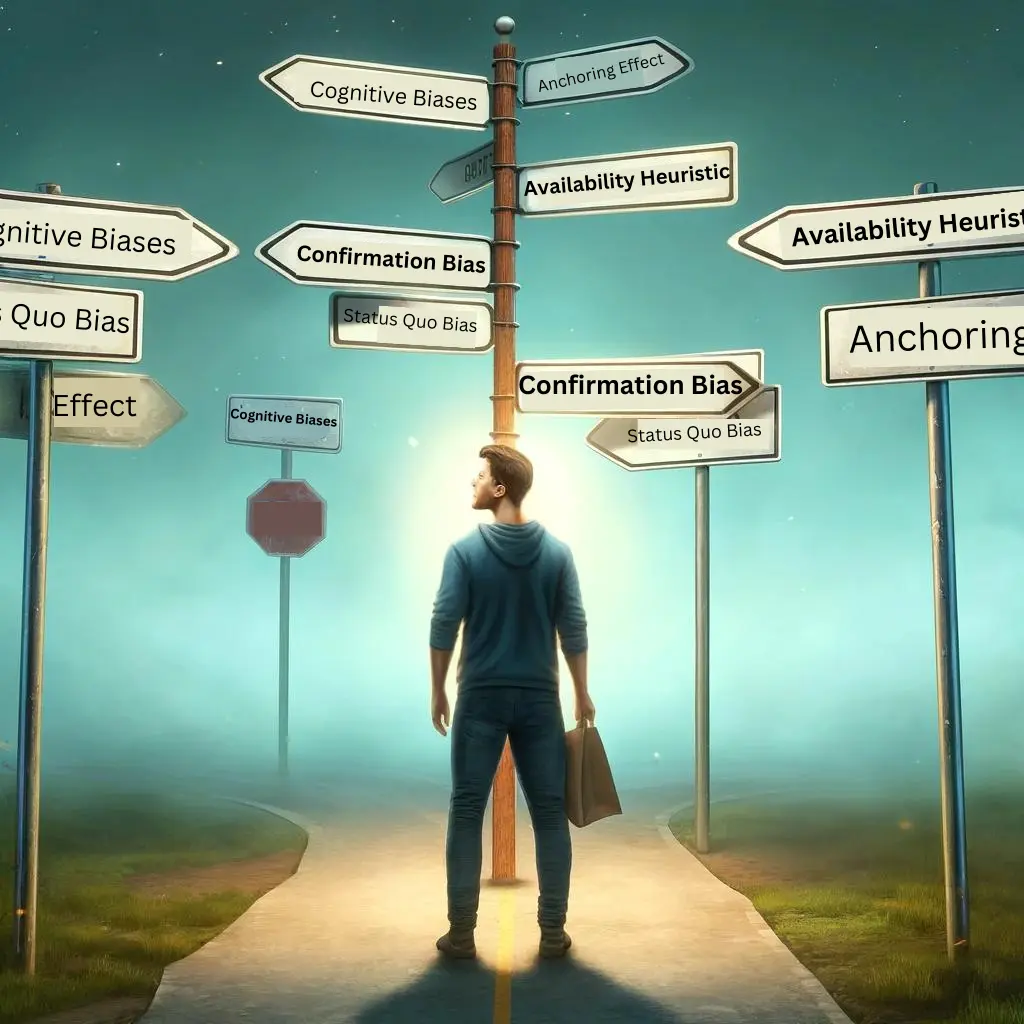
Status Quo Bias: The Comfort of Familiarity
Status quo bias is the preference to keep things in their current state, while viewing any changes as a loss or risk. This bias roots itself in the comfort of the familiar and the fear of the unknown, often leading to decisions that maintain the current situation, regardless of potential benefits of a change.
Real-World Implication:
In personal finance, this might manifest in an investor’s decision to stick to traditional investment vehicles, even when newer, potentially more profitable opportunities are available. In daily life, it could be as simple as sticking to the same brand of product out of convenience or a reluctance to experiment with new options.
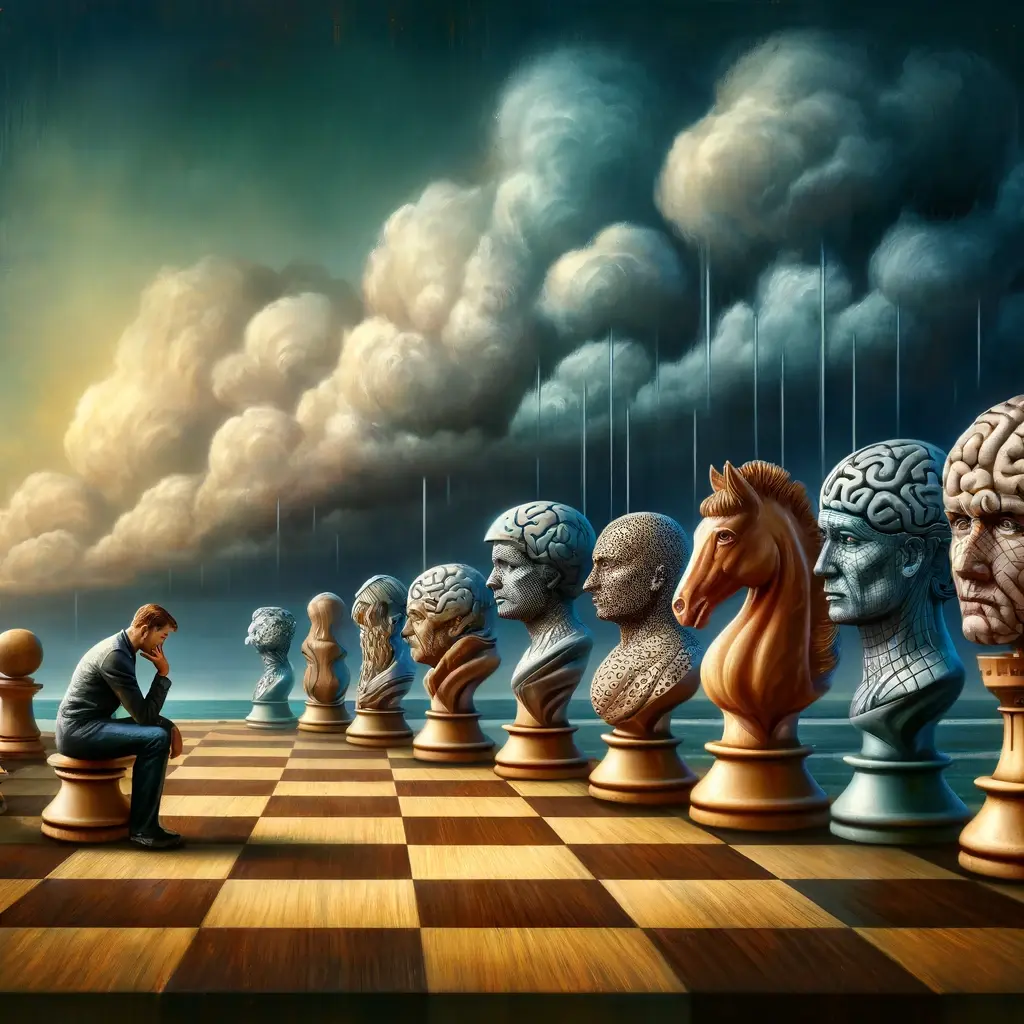
Overcoming Cognitive Biases
While completely eradicating cognitive biases from our decision-making processes may be unrealistic, recognizing and mitigating their influence is certainly within reach. Here are some strategies:
- Seek Contradictory Viewpoints: Actively seeking out information that challenges your current beliefs can counteract confirmation bias.
- Set a Broad Range of Possibilities: When making decisions, consciously set a wide range of potential outcomes to avoid the anchoring effect.
- Evaluate the Source and Context of Information: This can diminish the impact of the availability heuristic by putting information into a broader perspective.
- Review the Status Quo: Regularly review current practices and beliefs to determine whether they still serve your best interests or if they’re merely comfortable but outdated.
Conclusion to Cognitive Biases
Understanding and addressing cognitive biases can lead to more rational, inclusive, and effective decision-making. By acknowledging the pervasive nature of these biases, we can begin to steer our thoughts and choices towards more objective and balanced outcomes. Remember, awareness is the first step toward change, and in the complex landscape of our minds, a little awareness can go a long way in clearing the fog cast by these subtle yet powerful mental forces.
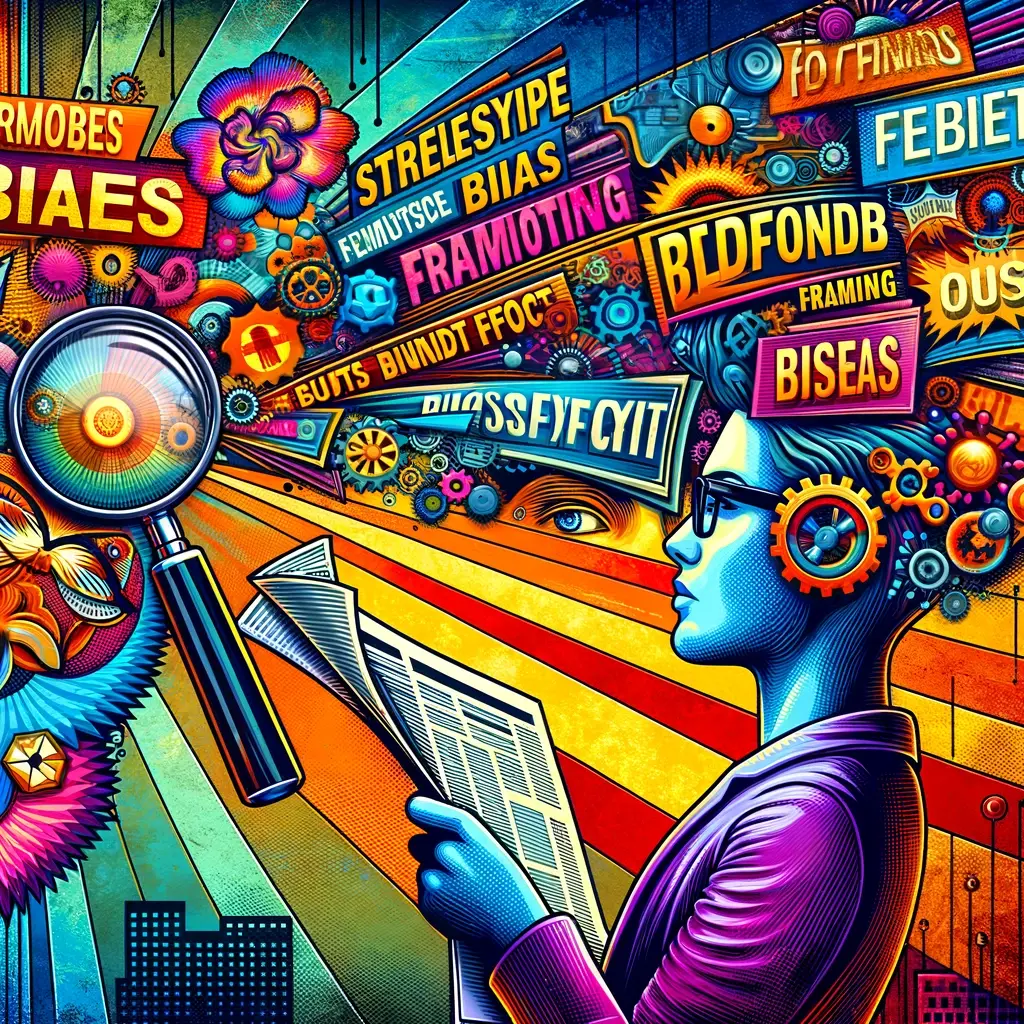
Frequently Asked Questions (FAQs) about Cognitive Biases
1. What is a cognitive bias?
A cognitive bias is a systematic error in thinking that affects the decisions and judgments that people make. These biases are often a result of your brain’s attempt to simplify information processing and are influenced by a variety of factors including personal experience, emotion, and cognitive load.
2. How do cognitive biases affect our everyday decisions?
Cognitive biases can affect every aspect of our decision-making, from the products we buy to the people we trust and the beliefs we hold. They can cause us to make choices that aren’t in our best interests or to ignore important information that contradicts our preconceptions.
3. Can you provide an example of confirmation bias in everyday life?
Confirmation bias can be seen when a person only pays attention to political news that supports their own beliefs while ignoring or rationalizing conflicting information. This bias reinforces existing views without challenging or expanding them.
4. Why is the anchoring effect significant in negotiations?
The anchoring effect plays a crucial role in negotiations because the first price set can significantly influence the entire negotiation process. It tends to set the psychological benchmark by which subsequent offers are judged, making it harder to adjust far from that initial number.
5. What is the availability heuristic and how does it impact perception?
The availability heuristic is a mental shortcut that relies on immediate examples that come to a given person’s mind when evaluating a specific topic, concept, method or decision. This can lead to a distorted perception of reality, based on how recent or emotionally powerful certain memories are.
6. How can we overcome the status quo bias?
Overcoming status quo bias involves questioning current practices and considering alternatives with an open mind. Regularly reassessing the benefits and drawbacks of existing situations and being proactive in seeking new information can help counter this bias.
7. What steps can individuals take to minimize the effects of cognitive biases?
To minimize the effects of cognitive biases, individuals can:
- Seek diverse opinions and information.
- Challenge their assumptions and preconceptions.
- Take time to make decisions, allowing for thorough evaluation of all available information.
- Use systematic decision-making processes to avoid impulsive judgments.
8. Are cognitive biases always negative?
No, cognitive biases are not always negative. They can be helpful by allowing us to make quick decisions that are reasonably accurate, especially in environments that are familiar to us. However, they can lead to poor judgments and decisions when not recognized or controlled.
9. What is the impact of cognitive biases in professional settings?
In professional settings, cognitive biases can lead to poor decision-making, inefficient processes, and workplace conflicts. For instance, confirmation bias can cause managers to overlook potential problems or opportunities, affecting productivity and innovation.
10. How do cognitive biases differ from logical fallacies?
Cognitive biases are unconscious influences that distort our thinking and decision-making processes, often based on cognitive and emotional factors. Logical fallacies, on the other hand, are errors in reasoning that undermine the logic of an argument. While both can distort understanding and lead to erroneous conclusions, cognitive biases are typically ingrained psychological patterns, whereas logical fallacies are often deliberate or accidental errors in argumentation.
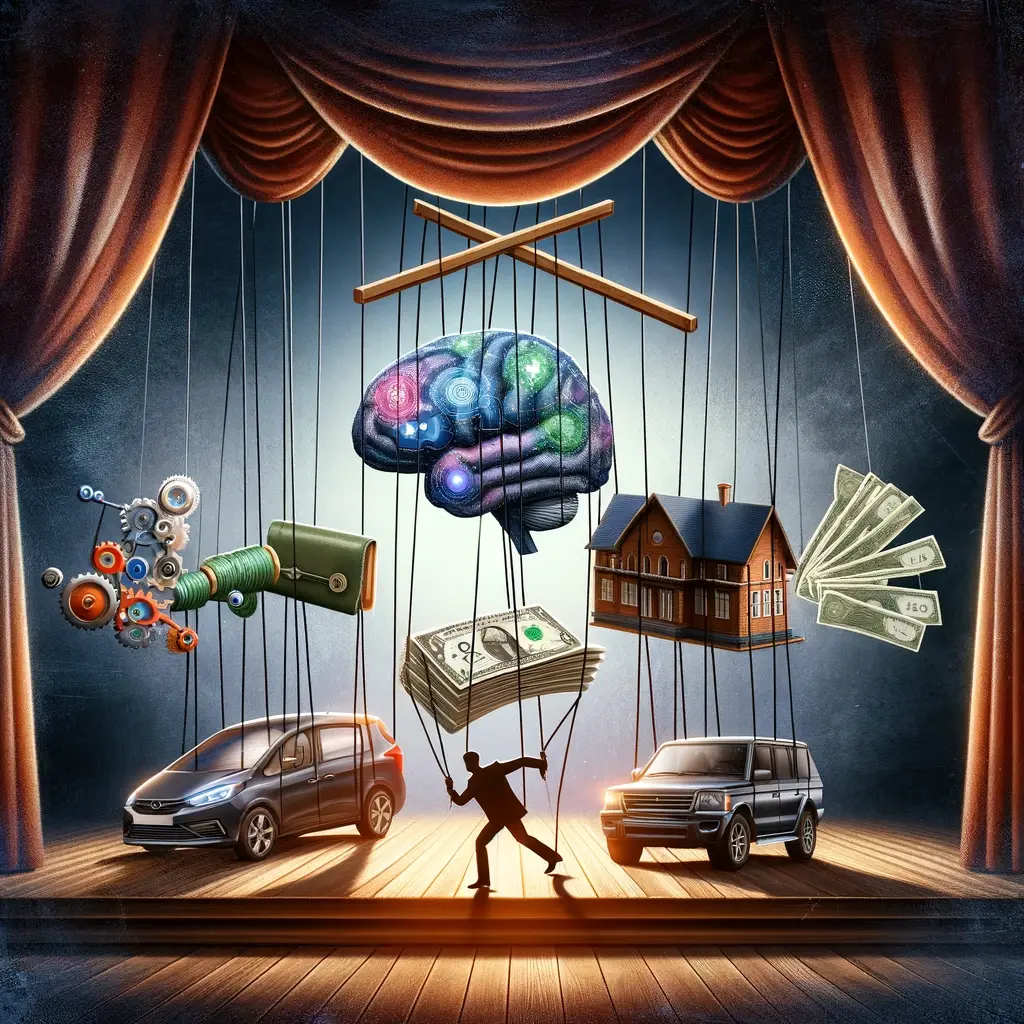
Additional Resources
Books:
- “Influence: The Psychology of Persuasion” by Robert B. Cialdini – A classic book that explores the key principles of influence and how they are used in various scenarios.
- “Emotional Intelligence” by Daniel Goleman – This book introduces the concept of emotional intelligence and discusses its importance in personal and professional success.
- “Thinking, Fast and Slow” by Daniel Kahneman – Kahneman discusses the dual-process theory of the mind and how it influences our decisions.
Websites:
- Psychology Today – Features a wide range of articles on psychology topics, from mental health to interpersonal relationships.
- Verywell Mind – Offers information and resources on mental health and strategies for improving psychological well-being.















